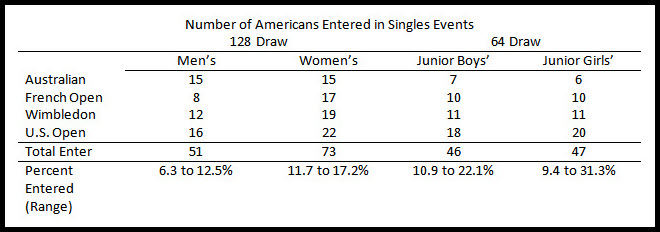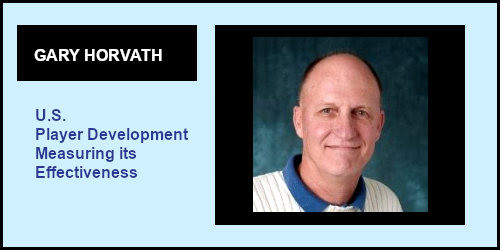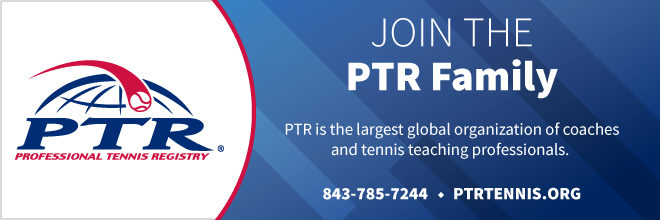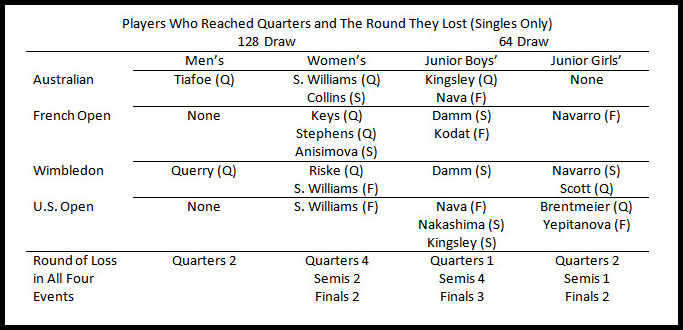
|
Performance (Quality)
If success is measured by performance,
such as reaching the quarterfinals, the 2019 Slams were a colossal
failure for American tennis.
There are many talented American players, but in 2019 none of
the American men, women, or junior players won a Grand Slam singles
event. Twenty-three of the 217 slots filled by American, 10.6%,
resulted in players reaching the quarterfinals or better.
The American men were not a force in the 2019 Slams!
Stephens (age 26) and Keys (age 24) continued to be underachievers
in the Slams as they only reached the quarters at the French
Open. Riske (age 29) and Collins (age 25) surprisingly reached
the quarterfinals at Wimbledon and the semis at the Australian,
respectively. Will these four women improve their 2019 performance
in the 2020 Slams? What other American women are poised to reach
at least the quarters of the Slams in 2020?
Anisimova (age 18) had the best
results of the younger women players, reaching the semis of the
French Open. Kenin (age 20), Gauff (age 15) and McNally (age
17) created excitement and hope for the future, although they
did not reach the quarters in the women's Slams. Will these players
continue to develop their skills and be counted on for stronger
performances in the 2020 Slams?
In the Slams juniors events Kingsley, Nava, and Damm reached
the quarterfinals in the boys' events and Navarro had two strong
performances in girls' tournaments. Are our player development
efforts only able to produce a handful of players who might be
able to compete on the pro tour and reach the quarters of the
Slams? |

|









